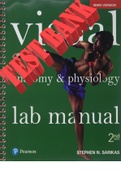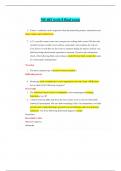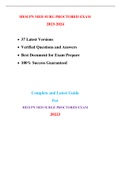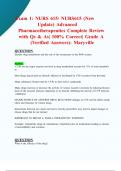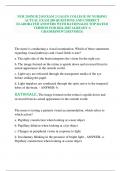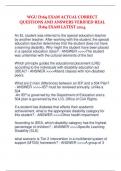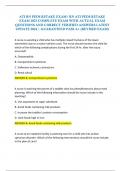Exam (elaborations)
Visual Anatomy & Physiology Lab Manual, Main Version 2nd Edition by Stephen Sarikas - All Chapters 1-32 | TEST BANK
Visual Anatomy & Physiology Lab Manual, Main Version 2nd Editionby Stephen Sarikas. ISBN-10 2 ISBN-13 978-0. All Chapters 1-32. (Complete Download). TEST BANK TABLE OF CONTENTS Exercise 1 Body Organization and Terminology Exercise 2 Care and Use of the Compound Light Microscope Exercise 3 Cell ...
[Show more]
